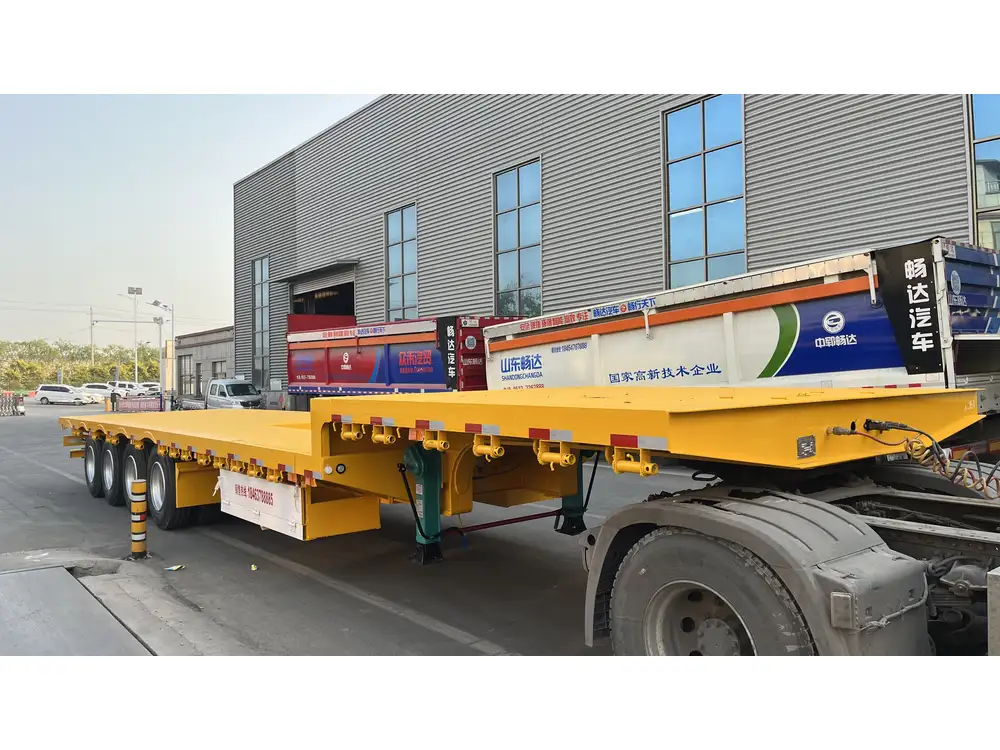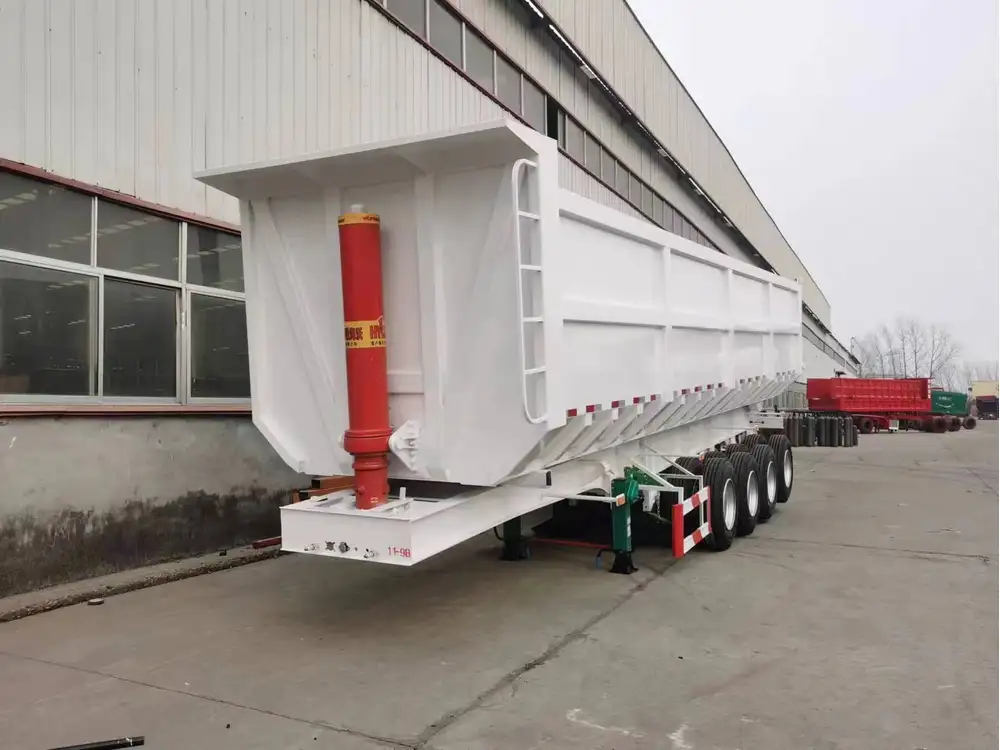In the world of trucking and transportation, the topic of axles is pivotal, influencing various aspects such as load capacity, road safety, and regulatory compliance. Understanding the number of axles found on semi-trucks and trailers is essential for manufacturers, truck drivers, logistics managers, and fleet operators alike. In this article, we will dissect the details surrounding semi truck and trailer axles, addressing common queries and covering crucial details that may aid in making informed decisions.
Understanding Semi Truck Axle Configurations
Axles Defined
At its core, an axle is a crucial component of a vehicle. It serves as the central shaft for rotating wheels, playing a direct role in supporting the weight of the vehicle as well as its cargo, enabling movement through its connection with the drivetrain. In semi-trucks, axles can be categorized into two primary types based on their positioning: drive axles and trailer axles.
| Axle Type | Function | Typical Location |
|---|---|---|
| Drive Axles | Provide power to the vehicle | Under the truck cab |
| Trailer Axles | Support the trailer’s weight | Under the trailer chassis |

Common Semi Truck Axle Configurations
Single Axle Configuration
- This configuration typically features one drive axle at the rear of the tractor. It is commonly found in lighter-duty trucks that are designed for local deliveries and standard freight.
- Load Limit: Generally up to 20,000 pounds.
Tandem Axle Configuration
- The most common configuration among semi-trucks, this setup includes two drive axles positioned close together. It allows for greater load distribution, stability, and maneuverability when loaded.
- Load Limit: Generally supports up to 34,000 pounds.
Tridem and Quad Axle Configurations
- These configurations feature three and four axles, respectively. They are primarily used for heavy-duty hauls requiring high weight capacities, common in construction and agriculture sectors.
- Load Limits: Tridem setups can support up to 42,000 pounds, while quad axles can exceed 50,000 pounds, depending on state regulations.
Trailer Axles Explained
Trailers can also have different axle configurations. The number of axles on a trailer can impact both legal weight capacities and operational flexibility.
Single Axle Trailer
- Includes one axle used for lighter loads, suitable for utility trailers and smaller cargo.
Tandem Axle Trailer
- The most common trailer configuration featuring two axles, facilitating an increased weight limit and more stable handling.
Tri-Axle Trailer
- Commonly used for specialized hauling needs, such as car carriers or flatbed trailers, which require to carry heavier loads.
Axle Count Breakdown
| Configuration Type | Typical Axles on Semi-Truck/Trailer | Load Limit |
|---|---|---|
| Single Axle Semi-Truck | 1 drive axle | Up to 20,000 pounds |
| Tandem Axle Semi-Truck and Trailer | 2 drive axles + 2 or more trailer axles | Up to 34,000 pounds (for tandem) |
| Tridem Axle Semi-Truck & Tri-Axle Trailer | 3 drive axles + 3 trailer axles | Up to 42,000 pounds |
| Quad Axle Trailer | 4 axles (often for specialized transportation needs) | Varies, often over 50,000 pounds |

Regulatory Considerations for Axles
The number of axles is not just a matter of engineering design but also one of legal compliance. Federal and state regulations dictate the maximum allowable weight that can be carried based on axle configurations, including:
Federal Bridge Law
Under the Federal Bridge Law, the maximum legal weight on any group of axles is calculated using a formula that seeks to avoid excessive wear on bridges and roadways. This is particularly important for operators to understand, as exceeding these limits can result in fines and increased risk of accidents.
Formula for Maximum Weight: [ W = \frac{LN}{N-1} + 12N + 36 ] Where:
- (W) = maximum weight in pounds
- (L) = distance in feet between the outer axles of any group of axles
- (N) = number of axles in the group
State Regulations
Individual states maintain specific regulations regarding weight limits based on axle configuration. For instance, while the federal limit for tandem axle configurations is 34,000 pounds, some states may set different limits.

Importance of Compliance
Adhering to these regulations is critical for various reasons:
- Safety: Overloaded vehicles contribute to wear and tear on roads plus increased stopping distances, leading to accidents.
- Financial: Violating weight restrictions can lead to hefty fines and costly legal fees.
Semantics of Axle Count: Efficiency vs. Capacity
The choice of axle configuration directly influences not just loading capacities but also fuel efficiency and maintenance costs.
- A tandem axle configuration allows for better weight distribution and usually leads to improved fuel economy due to less engine strain compared to a single axle setup.
- More axles, such as in tridem and quad setups, can bear strategic weight advantages but might increase tire maintenance and upfront costs associated with the vehicle.
Capturing the Market’s Attention
When discussing axles, one must also consider the market trends influencing purchasing decisions. Fleet operators often weigh the balance between maintenance costs, fuel efficiency, and payload capacities.
| Aspect | Single Axle | Tandem Axle | Tridem/Quad Axle |
|---|---|---|---|
| Initial Cost | Lower | Moderate | Higher |
| Maintenance | Moderate | Higher (due to complexity) | Very High (if not managed) |
| Fuel Efficiency | Fair | Better | Variable (dependent on load) |
| Payload Capacity | Limited | Good | Excellent |

Key Considerations for Manufacturers
As a manufacturer of semi-trailers, the design of axles is central to your product offerings. Here are some pivotal design attributes to consider:
Durability and Strength
Utilizing high-grade materials to ensure that axles endure the rigors of heavy loads and rough terrain is vital. Manufacturers should employ materials that have both resilience and weight-bearing properties.
Compatibility and Modular Design
Offering modular axle setups can appeal to customers with varying needs. Customers may prefer configurations that allow reconfiguration for different types of loads.

Innovation in Design
There has been a growing trend in employing advanced engineering techniques such as lightweight materials alongside sensor technologies that can help monitor axle performance, load distribution, and potential failure points.
Conclusion
Understanding how many axles a semi-truck and trailer have is fundamental for anyone involved in trucking, manufacturing, or logistics. With configurations ranging from single to quadruple axles, each type offers distinct benefits and restrictions regarding load capacity, efficiency, and regulatory compliance. Decisions surrounding axle count and truck configuration should be made carefully, as they significantly impact the operational efficiency of a trucking operation and the viability of transport solutions in diverse scenarios.
This comprehensive guide sheds light on important aspects of axle configurations, enabling readers to draw informed insights. As we continue to adapt to industry needs, enhancing vehicle designs that balance load capacities, efficiency, and safety will be imperative for future success in the transportation sector.



